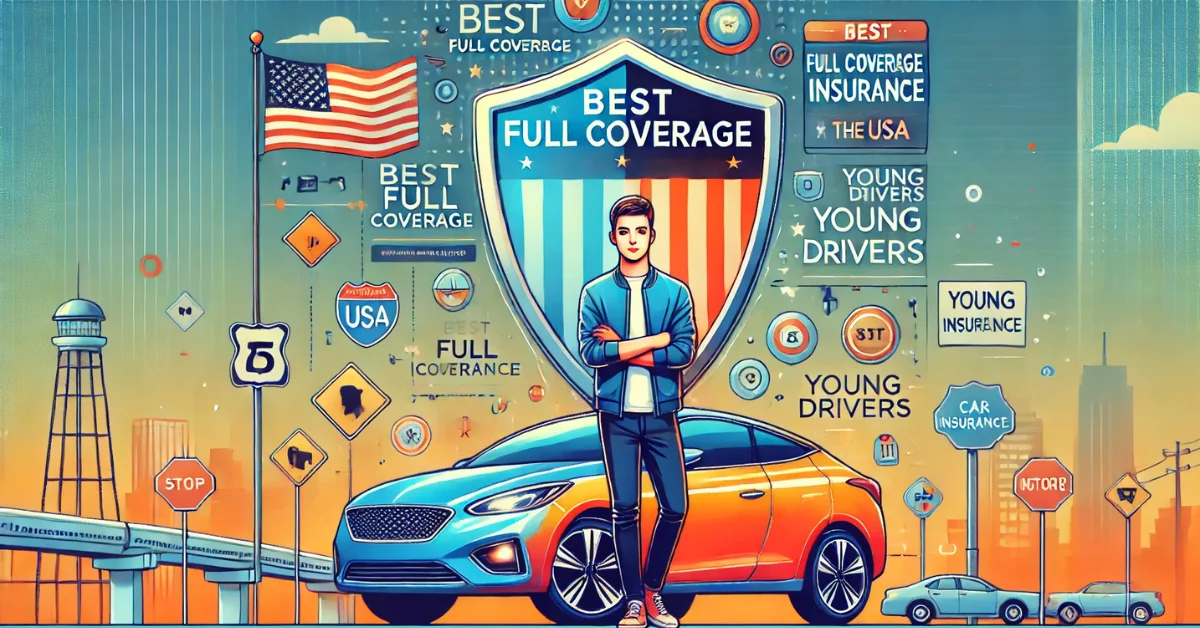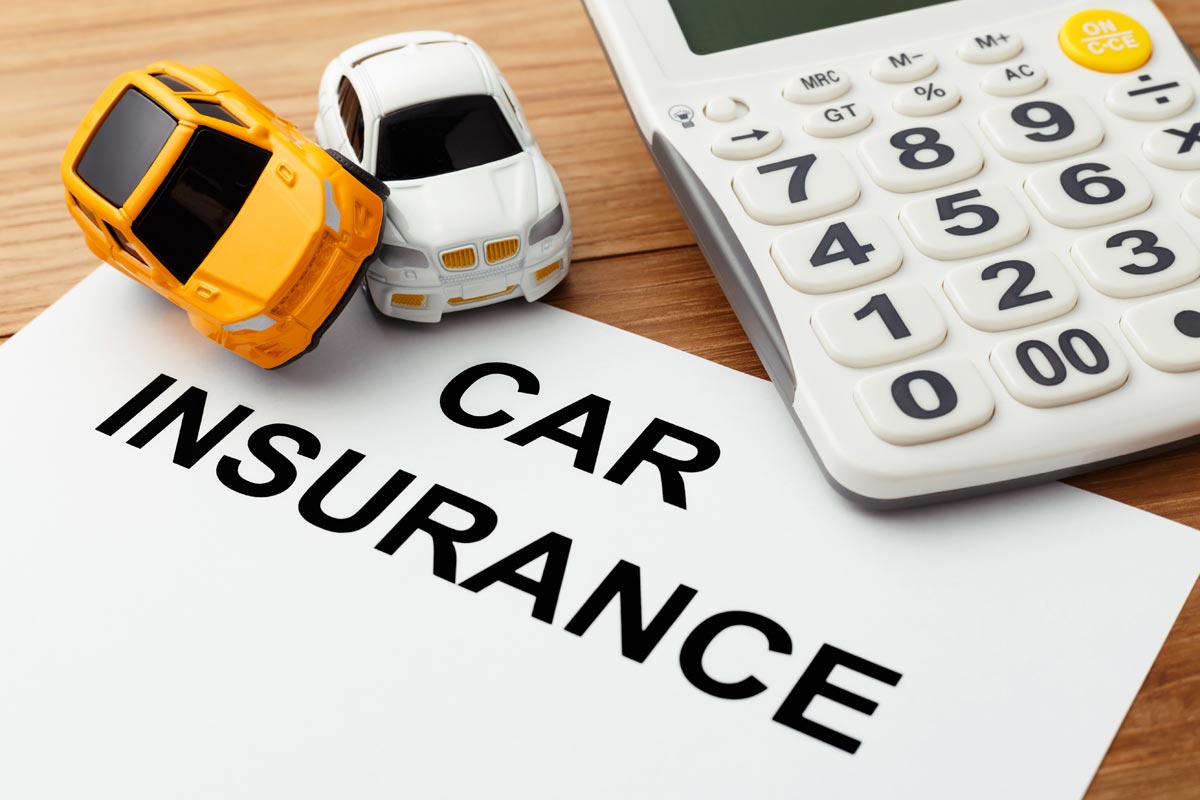Best Car Insurance for New Drivers

Best car insurance for new drivers is a crucial topic, navigating the complexities of securing affordable and comprehensive coverage. The transition from learner to licensed driver marks a significant milestone, filled with excitement but also the responsibility of protecting oneself and others on the road. Finding the right insurance policy can seem daunting, given the numerous factors influencing premiums and the variety of coverage options available.
This guide will illuminate the path towards securing the best car insurance for new drivers, focusing on affordability, comprehensive coverage, and understanding the nuances of insurance policies.
This comprehensive guide will delve into the key aspects of car insurance for new drivers, examining factors that influence costs, exploring various coverage options, and offering practical advice on securing the best possible rates. We will explore different insurance providers, compare their offerings, and discuss strategies for minimizing premiums while ensuring adequate protection. We’ll also address common concerns, such as the impact of driving history and the role of telematics programs.
Ultimately, our goal is to empower new drivers to make informed decisions and secure the best car insurance to suit their individual needs and budget.
Table of Contents
ToggleUnderstanding New Driver Insurance Needs
Securing affordable and comprehensive car insurance is crucial for new drivers. Several factors significantly influence the cost of insurance premiums, and understanding these factors is the first step towards finding the right coverage.
Factors Influencing Insurance Costs for New Drivers
Insurance companies assess risk when setting premiums. For new drivers, this risk is often perceived as higher due to inexperience. Key factors include age, driving history (even a lack of it), location, the type of vehicle, and credit history. The higher the perceived risk, the higher the premium.
Typical Coverage Options for New Drivers
Most new drivers will need at least liability coverage, which protects others in case of an accident you cause. However, collision and comprehensive coverage are highly recommended to protect your own vehicle.
Comparison of Liability, Collision, and Comprehensive Coverage
Liability insurance covers damages or injuries you cause to others. Collision coverage pays for repairs to your car after an accident, regardless of fault. Comprehensive coverage protects against damage not caused by collisions, such as theft or vandalism.
| Coverage Type | What it Covers | Is it Required? | Cost Factor |
|---|---|---|---|
| Liability | Damages and injuries to others | Usually required by law | Generally lower cost than other coverages |
| Collision | Damage to your vehicle in an accident | Not required but highly recommended | Cost depends on vehicle value and deductible |
| Comprehensive | Damage to your vehicle not caused by collisions (theft, vandalism, weather) | Not required but highly recommended | Cost depends on vehicle value and deductible |
Common Add-on Coverages and Their Benefits
Several add-on coverages can enhance your protection. Examples include uninsured/underinsured motorist coverage (protecting you if hit by an uninsured driver), roadside assistance, and rental car reimbursement.
- Uninsured/Underinsured Motorist Coverage: Protects you in accidents caused by uninsured or underinsured drivers.
- Roadside Assistance: Covers towing, flat tire changes, and other roadside emergencies.
- Rental Car Reimbursement: Covers rental car expenses while your vehicle is being repaired after an accident.
Average Cost of Car Insurance for New Drivers Across Different Age Groups
Insurance costs vary greatly depending on age. Younger drivers generally pay more due to higher perceived risk.
| Age Group | Average Annual Cost (Example) |
|---|---|
| 16-17 | $2000 |
| 18-20 | $1800 |
| 21-25 | $1500 |
| 26+ | $1200 |
Note: These are example figures and actual costs vary significantly based on location, driving record, and other factors.
Finding Affordable Insurance Options
Finding the best car insurance rates requires research and comparison shopping. Several strategies can help new drivers secure affordable coverage.
Reputable Car Insurance Companies Offering Competitive Rates to New Drivers, Best car insurance for new drivers
Several insurers are known for offering competitive rates to new drivers, though specific rates vary by location and individual circumstances. Examples include Geico, State Farm, and Progressive. It’s crucial to compare quotes from multiple companies.
Comparison of Discounts Offered by Different Insurers for New Drivers
Many insurers offer discounts for new drivers who meet certain criteria. Common discounts include good student discounts (for maintaining a high GPA), safe driver discounts (for completing a defensive driving course), and multi-policy discounts (for bundling car insurance with other types of insurance).
Obtaining Multiple Quotes to Find the Best Rates
The process involves visiting the websites of several insurance companies, providing the required information, and comparing the quotes received. Online comparison tools can also simplify this process.
Impact of Driving History (Even if Limited) on Insurance Premiums
Even a clean driving record, however brief, can positively impact premiums. Insurance companies prefer drivers with a demonstrable history of safe driving.
Tips for Lowering Car Insurance Costs for New Drivers
Several strategies can help reduce insurance costs.
- Maintain a good driving record.
- Take a defensive driving course.
- Consider a car with a lower insurance rating.
- Explore discounts offered by insurers.
- Increase your deductible (this lowers your premium but increases your out-of-pocket cost in case of an accident).
- Bundle insurance policies.
- Maintain good credit.
Key Factors Affecting Insurance Premiums
Numerous factors influence the cost of car insurance. Understanding these factors allows for informed decision-making.
Relationship Between Car Type and Insurance Premiums
The type of car you drive significantly impacts your premiums. Sports cars and high-performance vehicles generally cost more to insure than sedans or smaller cars due to their higher repair costs and greater potential for accidents.
How Driving Record (Even a Clean One) Impacts Insurance Costs
A clean driving record, even a short one, demonstrates responsible driving and lowers your risk profile. Conversely, accidents and traffic violations increase premiums significantly.
Examples of How Location Affects Insurance Rates
Insurance rates vary by location due to differences in accident rates, theft rates, and the cost of repairs. Urban areas generally have higher rates than rural areas.
Role of Credit History in Determining Insurance Premiums
In many states, credit history is a factor in determining insurance premiums. A good credit score often correlates with lower premiums, while poor credit can result in higher premiums.
Hierarchical Structure of Factors Influencing Insurance Premiums

Source: freeconverts.com
The factors influencing insurance premiums can be organized hierarchically, with some factors having a greater impact than others. For example, driving history often outweighs credit history in terms of impact.
- Driving History (Accidents, violations)
- Age and Experience
- Vehicle Type
- Location
- Credit History
Telematics and Usage-Based Insurance
Telematics programs use technology to monitor driving behavior and offer usage-based insurance options. This can lead to potential cost savings for safe drivers.
How Telematics Programs Work and Their Impact on Insurance Costs
Telematics programs use a device (often a small plug-in) or a smartphone app to track driving habits, such as speed, braking, and mileage. Safe driving behavior can lead to discounts on insurance premiums.
Comparison of Different Telematics Programs Offered by Various Insurers

Source: prontoinsurance.com
Different insurers offer varying telematics programs with different features and reward structures. Some focus on speed and braking, while others also track mileage and time of day driving.
Privacy Concerns Associated with Telematics Data Collection
Concerns exist regarding the privacy of data collected by telematics programs. Insurers generally have policies in place to protect this data, but it’s important to understand how your data is used.
Step-by-Step Guide on How to Enroll in a Telematics Program
Enrollment typically involves contacting your insurer, agreeing to the terms and conditions, installing the device or app, and starting to collect driving data. Your insurer will provide specific instructions.
Infographic Depicting the Benefits and Drawbacks of Usage-Based Insurance
An infographic would visually compare the pros and cons of usage-based insurance. The benefits side would highlight potential premium discounts, increased awareness of driving habits, and personalized feedback. The drawbacks side would emphasize privacy concerns, the potential for increased stress from monitoring, and the possibility of not receiving discounts if driving habits aren’t improved.
Additional Resources and Support
Several resources are available to help new drivers navigate the complexities of car insurance.
Reputable Sources of Information on Car Insurance for New Drivers
Descriptions of resources include government websites offering consumer information on insurance, independent organizations providing unbiased insurance comparisons, and reputable financial websites with educational articles on car insurance.
Contact Information for Relevant Organizations That Offer Assistance to New Drivers
Descriptions of organizations include state-level departments of insurance offering consumer assistance and advocacy groups focusing on consumer protection in the insurance industry.
Resources for Resolving Insurance Disputes
Descriptions of resources include state-level insurance departments that handle complaints and mediation services to resolve disputes between drivers and insurers.
Importance of Reading and Understanding Insurance Policies
Thoroughly reviewing your insurance policy ensures you understand your coverage, limitations, and responsibilities. Don’t hesitate to contact your insurer for clarification on any aspect of your policy.
Questions New Drivers Should Ask Their Insurance Provider
A list of questions new drivers should ask includes:
- What types of coverage do you offer?
- What are my premium options and what factors influence them?
- What discounts am I eligible for?
- What is the claims process?
- What is your customer service policy?
Epilogue: Best Car Insurance For New Drivers
Securing the best car insurance for new drivers requires careful consideration of several factors, from coverage options and provider comparisons to understanding the impact of driving history and leveraging available discounts. By understanding the nuances of insurance policies and employing smart strategies, new drivers can find affordable and comprehensive coverage that protects them financially while they gain experience on the road.
Remember, proactive research and informed decision-making are key to securing the best possible insurance plan. Don’t hesitate to utilize the resources and tips provided in this guide to embark on your journey to confident and secure driving.
Helpful Answers
What is the difference between liability, collision, and comprehensive coverage?
Liability coverage pays for damages or injuries you cause to others. Collision covers damage to your car in an accident, regardless of fault. Comprehensive covers damage from events other than collisions, like theft or weather.
How can I lower my insurance premiums beyond discounts?
Maintain a good driving record, consider a car with lower insurance rates, bundle insurance policies, and increase your deductible (carefully weighing the risk).
What if I have a minor accident on my record?
Even minor accidents can impact your premiums. Be honest with your insurer; it’s usually better to disclose than to hide it. The impact depends on the insurer and the specifics of the accident.
How long does a new driver status typically last with insurance companies?
This varies by insurer but typically lasts for 3-5 years after receiving your license. After this period, your premiums are usually reassessed based on your driving record.